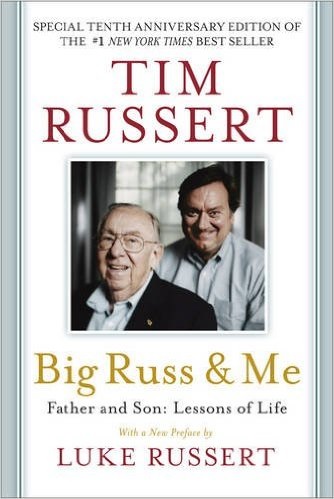
James Ferrell is co-founder and managing partner of the Arbinger Institute and its training and consulting arm, Arbinger Training and Consulting. He has authored or co-authored multiple bestselling books, including the Institute's Leadership and Self-Deception and The Anatomy of Peace and the forthcoming The Outward Mindset (Berrett-Koehler Publishers, June 13, 2016).
How was the Arbinger Institute was founded? What was (and has been) the basis for its ideas? How has it evolved?
The Arbinger Institute was founded by a scholar, Professor Terry Warner, who studied what is known as the self-deception paradox [when self-deceivers intentionally convince themselves to hold a belief they know to be false]. He and a team of scholars worked on the self-deception problem throughout the 1970s. In 1979 Terry created a corporate entity called Arbinger in order to handle an opportunity to help a particular company, Tubular Steel in St. Louis, Mo. The impact of that engagement on the company, which we write about in chapter 10 of The Outward Mindset, was profound. Terry continued his scholarly work, including an important period as a visiting scholar at Oxford University.
In the early 1990s, another company (a large telecom called U.S. West--now known as XFINITY) approached Terry about helping them. From that experience Terry began shifting his focus away from purely academic exploration to practical applications for people and organizations.
At this point he got in contact with three of his former students to see if they would be interested in joining him to build an organization that delivers these ideas to the world. I was one of these three students. I was practicing law at a large law firm in California but left to join Terry and the other two partners to build what is known today as the Arbinger Institute.
We spent the last half of the 1990s making the scholarly work around the solution to the self-deception problem more accessible, and honing the abilities of our people to effectively help people and organizations to transform their approaches.
Our first book, Leadership and Self-Deception, published in 2000, became a significant and ongoing bestseller with over 1.5 million copies sold to date, both accelerating our work with organizations and pulling us around the globe. Our second book, The Anatomy of Peace, published in 2006 with over 500,000 copies sold, boosted our growth further.
How would you say this new book differs from your previous ones?
This third book adds to our prior books in two very significant ways. First, over the years since our prior books, we have learned that the most effective way to help people avoid the problems associated with self-deception is to help people shift from what we call an inward-mindset orientation to an outward-mindset orientation. The Outward Mindset details how to make this shift. Secondly, whereas the first two books focus on how to resolve the problem of self-deception at the individual level, The Outward Mindset details how to help other people shift from inward to outward mindsets and how to shift the prevailing mindsets of teams, groups, and entire organizations.
When I've tried to describe this book to people, I've been struck by how the nearly universal first response has been that an outward mindset would be a naive and vulnerable approach--that if they habitually concern themselves with understanding others and looking for ways to be helpful to them, they will become doormats and victims, particularly when faced with aggressively self-centered individuals.
An outward mindset doesn't make one naive or stupid; it simply makes one aware. Having one's head down, narrowly focusing on oneself, is what puts people at risk. You might think of the way people use their mobile phones in public as a metaphor for this. Terrorism experts say that one of the best things people could do to keep themselves safer would be to put away their phones while they are in public and stay aware of what is happening around them. Having one's attention focused on one's phone is, metaphorically, what an inward mindset is like, while staying aware of one's surroundings is, metaphorically, what an outward mindset is like.
An outward mindset does not sublimate one's own wishes or objectives to those of others, it simply contextualizes one's own wishes and objectives within the other-filled reality that is a person's life. All of us are people surrounded by other people. An outward mindset keeps us clear about this. An inward mindset, on the other hand, closes me off from the equal humanity of those I work and live with, and the negative consequences that come from this kind of inward focus are severe.
Although it is true when I have an outward mindset that I am alive to and aware of others' objectives, I can still disagree with those objectives, even vigorously. For example, in an extreme case, someone might have an objective to kill or injure me. Having an outward mindset doesn't mean that I must therefore help them to do that. On the contrary--when my mindset is outward, I am best positioned to avoid harm to myself precisely because I am more aware of what others are up to. A person whose mindset is inward is too preoccupied with his or her own objectives to fully grasp what others might be trying to do. This is why we count among our clients the Navy SEALs, law enforcement officers and large segments of the military--their very lives depend on having and maintaining an outward mindset.
In addition to its impact on personal safety, one's effectiveness also depends on maintaining an outward mindset, for two main reasons. The first is that an inward mindset in one person provokes unnecessary resistance in others. Just think of how you may feel motivated to respond when you encounter someone you feel is just out for themselves. By contrast, an outward mindset greatly reduces resistance. A second reason is best illuminated in an organizational context: When my mindset is outward at work, I am focused on helping the organization to achieve its overall collective goals--after all, this is what I am being paid to do. Part of doing this is doing my work in a way that helps my work colleagues also to achieve their work-related objectives. I can do this only if I am alive to and aware of the objectives of my colleagues. So within organizations, a company's ability to achieve its collective results depends on its people both achieving the results they each are responsible for achieving and doing so in ways that help their colleagues to do the same.
One of the things that excites me the most about our work is the degree to which it is helpful in the most difficult of situations--when others are being difficult, seem out to get me or may even be dangerous. This is one of the reasons we start the book with the experience and results of a SWAT team engaging with an outward mindset. The completely natural response in situations like those encountered by SWAT teams is to respond with an inward mindset, because it seems that one would be hurt or disadvantaged if one doesn't. As that story illustrates, however, the reality is just the opposite: an inward mindset actually escalates problems and dramatically increases the likelihood of harm--personal and organizational--while an outward mindset positions one to see with clarity and to act with wisdom given the circumstances. It may seem counterintuitive at first, which is evidence of how fully people remain trapped within inward mindset assumptions. However, throughout the book we look at many real-life situations, many of them quite challenging, and show how various people and organizations have been tremendously helped by shifting to an outward mindset approach. --Sara Catterall








 For 16 years, Tim Russert was the moderator of NBC's Meet the Press, the longest tenure in the show's 69-year history. He was a senior vice-president and Washington bureau chief for NBC News, hosted a CNBC/MSNBC talk show, was a correspondent on other NBC programs and did special reports during the 2008 presidential election. That same year, Time magazine named Russert one of its 100 most influential people in the world. 2008 was also the year Russert died of a heart attack while preparing an episode of Meet the Press at NBC's Washington, D.C., office. He was 58.
For 16 years, Tim Russert was the moderator of NBC's Meet the Press, the longest tenure in the show's 69-year history. He was a senior vice-president and Washington bureau chief for NBC News, hosted a CNBC/MSNBC talk show, was a correspondent on other NBC programs and did special reports during the 2008 presidential election. That same year, Time magazine named Russert one of its 100 most influential people in the world. 2008 was also the year Russert died of a heart attack while preparing an episode of Meet the Press at NBC's Washington, D.C., office. He was 58.










